Sajama and Acotango - 15 days
About
Sajama and Acotango - 07/31/2019 to 08/13/2019BOOKINGS NOW OPEN
Sajama is the highest mountain in Bolivia and the fifteenth highest of the Andes 6542 metres high.
Located in the west of the country near the border with Chile, the access to this giant volcano is by an indigenous village with the same name, Villa Sajama. This is a proper Atacama village with very stylish houses and full of llamas. This will be our base for a few days.
Due to the high altitude, however, you have to go through a proper acclimation process. In our expedition this process will be at other smaller mountains. We will start our acclimatisation process at Chacaltaya, a mountain with 5400 meters high about 30km away from the Bolivian capital, La Paz.
After the acclimatisation at the Chacaltaya, we will drive 260km to Villa Sajama and before facing our main goal, we will once again climb a smaller but not too small peak: Nevado Acotango, 6052 meters above sea level.
Sajama is recommended for those who already have high altitude mountaineering experience and want to increase it. We will be totaling 5 peaks in 15 days!
Itinerary
Sajama and Acotango - 15 daysDay 1 – Arrival to La Paz – Expedition briefing – 3800m
We’ll pick you up at the El Alto Airport and take you to the Hotel Sajama where you’ll meet the guides. Before dinner, we’ll have a short expedition brief regarding all expedition details. Drink plenty water tonight, remember you have just landed at 4100 and will sleep at 3800 metres!
Day 2 – Acclimatisation and Logistic – 3800m
This is our first acclimatisation day in La Paz so take it very easy! The guides will check all your climbing and trekking equipment. We can rent all the necessary equipment at the local stores.
Day 3 – Acclimatisation and Logistic – 3800m
We will spend another day in La Paz for acclimatisation. You can use that day to visit the ruins of Tiwanaku (about 50km from La Paz) or stay on the bolivian capital to visit museuns, or just walk and see the city landscape. There is lot’s to do in La Paz.
Day 4 – Climbing Chacaltaya – 5400m
After an early breakfast, we’ll try our first peak and return to hotel in the afternoon.
Day 5 – Drive to Villa Sajama – 4400m
After sorting out rentals and logistic details in the morning we’ll drive to Villa Sajama, 5 hours away from La Paz. Night in a basic hotel.
Day 6 – Acclimatisation Villa Sajama- 4400m
We’ll stay that day in Villa Sajama. You can enjoy the hot springs and the stunning view of the mountains.
Day 7 – Climbing Mt Acotango – 6083m
Acotango is a pretty high volcano but is known as the highest 6000m one can drive to: 5650. After a 2 hour drive from Villa Sajama, we’ll reach a large ridge by car and start the 4 hour walk to the summit. We’ll return to the car and drive back to Villa Sajama.
Day 8 – Rest day Villa Sajama 4400m
We need a day doing absolutely nothing!
Day 9 – Walk to Sajama Base Camp
Today we will walk up to Sajama’s Base Camp. It is only 2 hours walk on a pristine west andean landscape with stunning view to Parinacota and Pomerape Volcanoes. You can hire a mule to leave your back pack (not included).
Day 10 – Walk to Sajama High Camp – 5650m
Today is one of the hardest days: 6 to 9-hour walk to High Camp at the base of a massive rock tower at nearly 5700m. After having an early dinner, we’ll hit the sleeping bags also pretty early for the big day tomorrow.
Day 11 – Summit attempt – 6538m
After leaving camp at around 1 am – we’ll climb through mixed terrain up to 6100 metres where a long ramp to the summit starts. From here the climb might take 2 to 4 hours. In total, we might climb up and down for about 7 – 9 hours.
Day 12 – Descent to BC and Villa Sajama – 4200m
We’ll break tents in the morning and descent to BC, then also walk for 45 min to the start of the trail where our driver will be waiting. Night at basic hotel.
Day 13 – Spare weather or acclimatisation day
Day 14 – Drive to La Paz – 3800m
Day 15 – Fly out back home
** The above itinerary is subject to change due weather conditions, performance of the group, political/administrative problems and any other events not described.
Equipment
Having good mountaineering equipment is one of the key points to have a successful expedition. Please note all your personal equipment will be checked by one of our guides in the hotel. You can easily rent or purchase all necessary mountaineering equipment in La Paz.
Head
-

Bandana
Buff or similar
Quantity: 1 or 2 Quantity: 1 or 2 -

Balaclava
To protect your face on summit push
Quantity: 1 -

Hat
Woollen hat or similar for cold days
Quantity: 1 -

Ski goggles
UV protection goggles to be used during storms or very cold conditions
Quantity: OPTIONAL -

Sunglasses (cat 3 or 4)
With side protection to fit your face
Quantity: 1 -

Sunscreen and lip balm
30 FPS or more
Quantity: 1 -

Batteries
AA or AAA batteries depending on your headtorch. Can be purchased in local store.
Quantity: 1 set -

Headtorch
Working headtorch and spare batteries
Quantity: 1
Torso
-

Light down jacket
Quantity: OPTIONAL
-

Summit Down Jacket
Heavy hooded down jacket for cold conditions
Quantity: 1 -
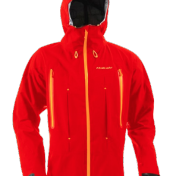
Snowproof jacket
A good snow, rain and windproof jacket
Quantity: 1 -

T-shirt
Synthetic fibre long or short sleeve t-shirt
Quantity: 3 or more - long sleeve if possible -

Fleece jacket
Used alone or as part of a layer system for better performance
Quantity: 1
Legs
-
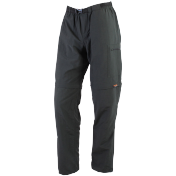
Trekking pants
Light trekking pants
Quantity: 2 or 3 -

Gaiters
For snow, sand or scree terrain
Quantity: 1 pair -
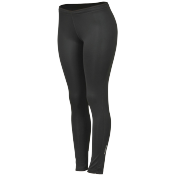
Base layer pants
For very cold days and summit push
Quantity: 1 -

Snowproof pants
Goretex or similar pants will be used for high wind or during snow conditions
Quantity: 1 -

Fleece Pants
Fleece, polartec or similar. To be used with other layers for very cold conditions
Quantity: 1
Hands
-
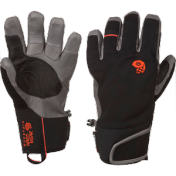
Waterproof gloves
A pair of good waterproof gloves for ice climbing with padded knuckles
Quantity: OPTIONAL -

Hand warmers
Chemical hand warmers for the summit push.
Quantity: 1 pack -

Mittens
Thick down mittens for summit push
Quantity: 1 pair -

Gloves
Fleece or polartec gloves for every day use
Quantity: 1 pair
Feet
-

Sandals or crocs
Sandals or crocs for river crossing or hanging around camp
Quantity: OPTIONAL -

Trekking boots
Waterproof trekking boots, try wearing them before the expedition
Quantity: 1 pair -

Trekking socks
Good thick trekking socks
Quantity: 4 pairs -

Thick expedition socks
For summit day
Quantity: 1 pair -
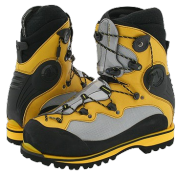
Double boots
A pair of double or double plastic boots such as Koflach Exped, Koflach Vertical, Asolo Ottomilla, Asolo AFS, Trezetta, Scarpa Vega, Scarpa Inferno, La Sportiva Baruntse, Olympus Mons, La Sportiva Spantik, Scarpa Phantom, La Sportiva G2.
Single layer boots such as La Sportiva Nepal XT, EVO, Batura or Boreal Latok, ARE NOT SUITABLE.
Quantity: 1 pair
Technical equipment
-

Ice tool
Technical ice axe or ice tool
Quantity: OPTIONAL -

Locking carabiner
-

Harness
A good light alpine harness
Quantity: 1 -
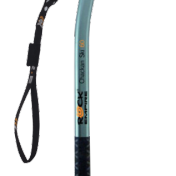
Ice axe
A traverse ice axe (piolet). Can be a straight tool or slightly curved.
Quantity: 1 -

Crampons
Crampons with antibott system
Quantity: 1 pair
Other Equipment
-

Water purifying tables/drops
A reliable way to treat water
Quantity: OPTIONAL -

Carbo gels
These gels help out on recovery
Quantity: 10 -

Snacks
Salty snacks, sweets, etc. Any sort of tasty ready food as complement. On high altitude mountains we don’t normally worry about vitamins and proteins as these kinds of food are too hard to digest. You can buy all these in a local market.
Quantity: 500gr -

Stuff sacks or bin bags
Helps to keep your stuff dry and organised
Quantity: OPTIONAL -

Sleeping Bag
A good down sleeping
Quantity: -15C (Comfort temperature) -

Rucksack
A decent rucksack with hip belt and rain cover
Quantity: 65 litres or more -

Altitude medicine
Our guides already have pretty much any drugs you might need during any trip. However, it would be great if you could have a spare tab of the most used drugs:
Ibuprofen (Advil)– This is an anti-inflammatory and works great for high altitude head aches
Quantity: kit
Loperamide (Imodium) – controls diarrea (not to be used in case of digestive infections. Ask our guides) -

Personal Hygiene kit
Soap, tooth brus, come, etc
Quantity: 1 -

Sleeping mattress
We prefer taking 2 foam sleeping mattress because of sharp rocks. If you have an inflatable mattress you should also bring a foam mattress to protect the inflatable one against sharp rocks. Don’t forget bringing a repair kit if you have an inflatable mattress.
Quantity: 1 -

1 litre thermos
Metallic good quality 1 litre thermos for the summit push. You must have one. Please do not bring smaller ones.
Quantity: 1 -

Water bottle
Nalgene 1 litre bottles or similar are great for expeditions! We prefer to not use camelbacks as its hose pipe might freeze
Quantity: 2 x 1 litre or 3 x 600ml -

Duffel Bag
Used to transport or store your equipment. In many cases, we transport your personal gear on animals and we don’t want your equipment to get wet or have mule smell…
Quantity: 1 -
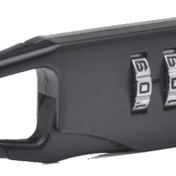
Padlock
To lock your duffel during transportation
Quantity: OPTIONAL -

Trekking poles
Gives you more stability during walk and summit push.
Quantity: 1 or pair
FAQ
Do I need visa to travel to Bolivia?
Bolivia requires visa on arrival to americans, south africans and some european countries. There are restrictions to Chinese citizens and to some african countries. Please read this article for more information:
https://en.wikipedia.org/wiki/Visa_policy_of_Bolivia
How much equipment will I have to carry? Can I make it?
Your backpack will never weigh more than 15-18 kg. The most weight you will carry will be at Sajama and it won’t exceed 18 kilos.
I still think 18kg is too much. Can I pay a porter to carry my stuff?
Yes, a porter can take at least 20kg but you have to tell us in advance. They charge around U$50 to U$70 for a 20kg load depending on which mountain. They charge the same for the descent.
Do I have to carry tents and stoves?
All group equipment is purchased, carried, cleaned and assembled by our guides and porters, you don’t have to worry about it.
Which hotel will we stay in La Paz? Do I need to book it?
We’ll stay in a 3 star hotel named Hotel Sajama. It is located at the heart of the old centre of La Paz at the busy Illampu street. The area is well known by tourists and has many equipment shops, restaurants and travel agencies. The hotel has free WiFi and hot shower. They serve a very nice breakfast and the hotel has a large conference room which we’ll use for the theoretical classes. The rooms are double, triple or quadruple.
Are there any forms of communication on the mountain?
We take a satellite phone and SPOT devices to update our Blog and Facebook daily. At high camp there might be cell phone coverage that works under roaming for most worldwide networks. Other than that we have VHF radios and we can communicate with our base at any time of the day. We have satellite phone for emergencies.
Would you guys call my family and tell them I’m alright?
Of course! Even better! We have a blog that is updated every day! We normally post messages or photos about the expedition progress. Please visit our Facebook page and check the latest posts.
Do I have to share rooms with someone?
Yes. All the rooms in the huts are shared between up to 4 people. It is a mountain hut, not very luxurious but quite comfortable. Sharing rooms with someone creates an essential partnership to survive and succeed in these hostile environments that are the mountains.
Can I charge batteries or phones on the mountain?
There are no charging facilities on the mountains so you have to take extra batteries.
What if I abandon or quit the expedition?
If you quit the expedition 1 week before departure, it is possible to recover part of your investment. Contact us and find out more.
If you quit the expedition in La Paz, you can continue enjoying the services we provide you such as transportation and hotel. However we can not pay back the money you invested because logistics will already be hired.
If you quit the expedition after we left La Paz, you will have to cover individual transportation and accommodation costs. Everyone who leaves the expedition for personal or health reasons, should pay these costs.
If you give up during the summit attempt, you will never have to go down alone. Usually we coordinate your descent with more expedition members or also with guides from other known expeditions. One of the guides will always be with you.
What’s your philosophy?
We accept women and men of any age, experience or ambition. We ask our members to be patient, respect the leader’s decisions and never go up or down alone.
Remember that you don’t pay us to take you to the summit, you pay mountaineering professionals with several years experience to help you up and down a steep mountain in the safest possible way.
Our itinerary may seem slower than other companies, this is due to a longer acclimatisation plan based on safety. More days will actually improve the chance of reaching the summit!
How much money should I take?
We recommend you to take about U$700 to cover all your expenses. You will spend money on dinners and lunches in La Paz and Villa Sajama, equipment rentals, telephone bills, porters, tips, etc. You might also have extra expenses in case you decide to abandon the mountain. You might need to rent a down sleeping bag which costs U$20 for the whole trip and a down jacket which costs U$15.
Can I take my credit card or traveller cheques?
We do not recommend you to take debit/credit cards to Bolivia as banks can be unreliable. If you had no option but taking a debit/credit card, please know American Express cards do not work in Bolivia.
The best way is to take US dollars, Euro or Sterling pounds. These can be easily exchanged into local currency as there are several exchange offices in La Paz. Some cards are accepted in large stores. However do not forget to tell your bank that you will be traveling to another country so your card is not blocked. Prepaid cards might work in some ATMs in La Paz.
What is the experience I need to participate?
Although we don’t require experience on high altitude mountains, it would be ideal you have previous experiences on high altitude peaks. To climb Sajama we recommend you to have at least, experience on multi-day treks so you’re already familiar with camping techniques and the use of hiking backpacks, etc.
What is the training I need for big mountains like this one?
To mountains over 6000m, we recommend you start training at least 3 months before departure. Of course this depends upon your physical condition. Aerobic exercises like running and cycling are great. Ideally ask a professional to recommend you a good aerobic training program. Mountain hiking with a backpack is also a very efficient exercise.
It that true that I need yellow fever vaccination to go to Bolivia?
Theoretically yes, but in the last four years the authorities did not ask our students for proof of vaccination. Bolivia is one of the countries that require yellow fever vaccine to travelers transiting Chaco Boreal, so if you come by land, you will need one. Check your vaccination card if you have already taken the vaccine in the past. It is valid for 10 years. You will need an international vaccination card. If you do actually take the vaccine, we recommend you take it at least 1 week before the trip as your body might react to it.
How is the weather in Sajama?
Expect dry cold days and freezing nights. Also, west wind usually starts just before noon and goes on for the whole afternoon. If there are storms, they usually come in the afternoon, after 1 or 2 pm.
Is there drinking water at Sajama?
Apart from a few exceptions, there are 2 water streams at Sajama. We have to take most of the water with us. There is no water at high camp unless is very warm.
How much do I need to give tips?
Tips are voluntary and very welcome. They are not mandatory. However if you tip someone, that means you are very pleased with their job. If everyone agrees, what we usually do after the expedition is to have a ‘pool’ with everyone’s contributions. We then share it equally among local staff.
What if I have a health problem?
Our leader and guides have extensive experience in mountain medicine and will solve most of the health problems you might have. We have an massive medical kit and can handle most of gastrointestinal disorders, altitude diseases, allergies and traumas.
Moreover, even the local Bolivian guides are very well trained in this type of problems. In Bolivia there is a certification called UIAGM and almost all guides already have it or are on the way to have one. UIAGM guides are normally trained on WFR protocol.
What if I need a rescue?
All guides in Bolivia are trained in rescues and first aid in remote areas. Our guides are required to have a valid WFR certification.
Do you recommend the use of Diamox?
NOT for the Andes. In extreme altitudes like the Himalayas or Karakorum we do recommend using Acetilzolamide or Diamox. This drug seems to actually work during the acclimatisation period by increasing the breathing rate at night (reduces CO2 levels), and also is a diuretic which eliminates sodium out of your system. In the Andes mountains however, mountains are too dry and taking diuretics such as Diamox actually decrease your acclimatisation capacity.
I was climbing in Peru before and I had a hard time communicating to my guide. Do your guides speak any english?
Yes, our leaders speak fluent english. Please check our team’s information and find out about our guides’ communication skills.
What’s the temperature my sleeping bag should stand?
We recommend you to bring good down sleeping bags with comfort temperature of -15ºC. Please note there are 2 types of temperatures shown in most of sleeping bags. We’re focusing on the “comfort temperature”. You can rent a sleeping bag for U$20 in La Paz.
What if I have a special diet?
Please tell us in advance about any food issues you might have and also please remind our guides about it too. Unless you bring your own food, we cannot help you if you are macro-biotic, vegan or celiac due to extreme logistical difficulties. Contact us and let us know about your food restriction.
Map
Cost
Expedition cost is U$ 2550, contact us to know payment methods:
What’s included:
- Leadership of a Andes Specialist professional mountain guide;
- 1 assistant guide (UIAGM or UIAGM aspirant) for every 2 or 3 students;
- cooks and porters for group equipment (not personal equipment);
- Taxes and climbing fees;
- Transport to/from airport;
- Transport to/from Villa Sajama;
- Transport to/from Acotango;
- 4 hotel nights in a 3 star hotel (Hotel Sajama, La Paz) with breakfast included – rooms are shared;
- 3 nights in basic accommodation hostel at Villa Sajama;
- Tent at Sajama and Condoriri Range (tents are shared);
- All meals outside La Paz (details on itinerary);
- Use of ropes and snow/ice anchors;
- Use of first aid kit;
- Water from snow melting on all mountains;
- Assistance for renting/buying equipment in La Paz;
What is NOT included:
- Flights from/to La Paz;
- Immigration tax or visas (if any);
- Personal equipment (read the equipment tab);
- Money return in case you abandon the expedition;
- International travel insurance;
- Lunch and dinner in La Paz and Villa Sajama;
- Extra nights at Sajama Hotel (we include 5);
- Single room in case you don’t want to share;
- Tips (if you believe our staff deserves it)
- Reimbursement for loss or damage of your personal equipment